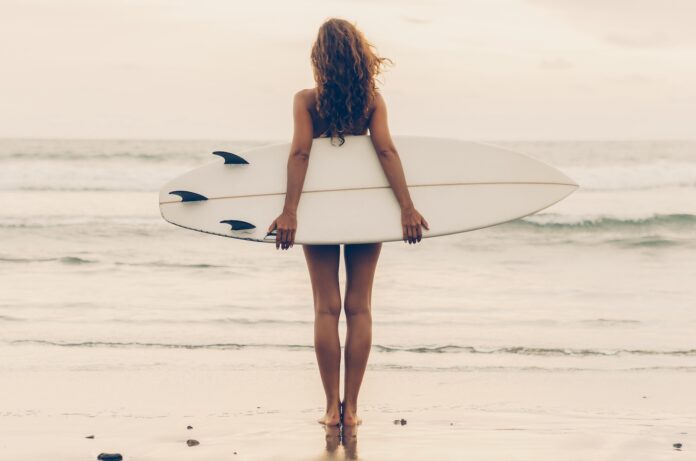Last updated:
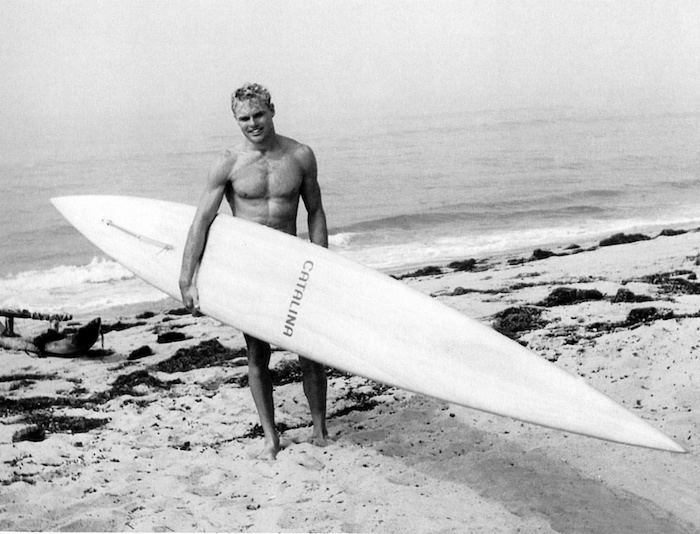
Ahhhh the good old surfboard fin. Second, only to the surfboard itself, the surfboard fin – or fins in most cases – plays a pivotal role (excuse the pun) in a surfer’s wave-riding experience. Unless you’re a student of Derek Hynd’s Far Field Free Friction movement i.e., finless surfing, chances are, your surfboard has one to four fins. The first surfers who attempted riding these raised masses of water we know as waves didn’t use surfboard fins. Instead, surfers used convex hulls to acquire some form of control or simply dragged a foot in the water to change direction. A common quandary with these early surfboards was an issue termed ‘sliding ass’ where the tail would slip sideways (usually), resulting in a face-plant by the surfer in question. Tired of the dreaded ass-slide and consequent wipeouts, in 1935, Tom Blake (one of the most influential surfers in the history of the sport) attached a 30cm long, 10cm deep metal keel he found on an abandoned speed boat to his surfboard.

The addition of a fin to the surfboard revolutionized the sport and provided stability and control to wave riding that had not yet been imagined. The surfboard fin allowed surfers to ride steeper, more powerful waves on the green face, subsequently opening up a host of surf spots that were, until then, un-surfed.
For several years many surfers thought the invention dangerous and traded the stability provided by the fin for the safety of bodily appendages, but by the 1940s the surfboard fin’s popularity began to snowball so much that by the 1950s it was the universal standard. Besides the instances where fins are removed to cultivate a unique wave riding experience, surfboard fins are a non-negotiable. Over the years, fins have changed in shape, size, quantity, and material used to make them. Surfers have added fins and taken them away, but it’s safe to say that the surfboard fin is here to stay.
Here’s your complete guide to the surfboard fin and how it works.
Choose Your Setup
Surfboard fins can be set up in multiple ways; you can have between one to five fins, and these can be set up differently to create distinctive wave riding experiences. Want to change the lines you draw on a wave? Desire a unique surfing adventure? Try a different setup.
Here’s a breakdown of the most common surfboard setups and how they will change your wave-riding escapade. Choose your flavor below!
The Single Fin
Introducing the OG of fin setups; the single fin. As its name aptly denotes, the single fin is one large fin placed at the back of the surfboard. When Tom Blake attached that metal keel to his surfboard all those years ago – he was searching for stability and control. And that’s exactly what a single fin provides; the most standard form of stability and control. Whereas other fin setups will allow you to drive or carve through turns, the single fin inspires directional changes as opposed to modern-day rail carves. It’s a hark back to the simple joys of wave riding, where you let the wave decide how it is to be ridden.
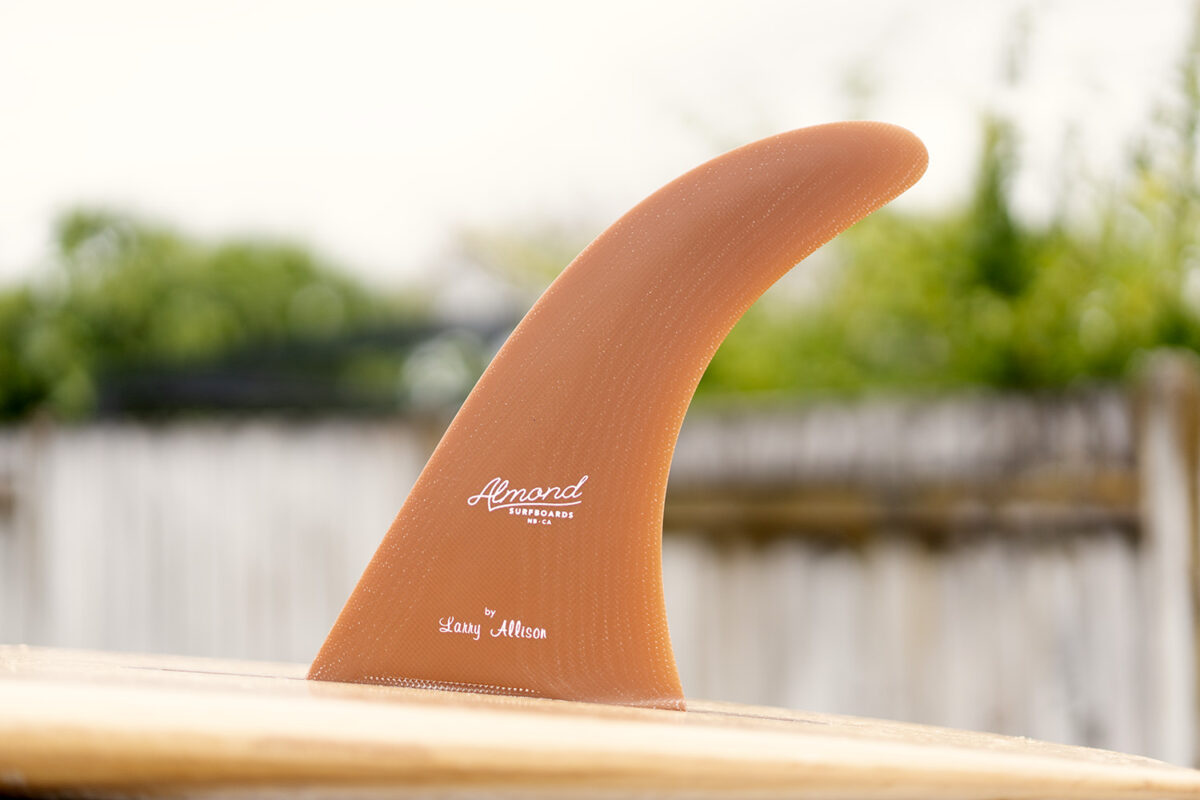
Handmade in California by Larry Allison
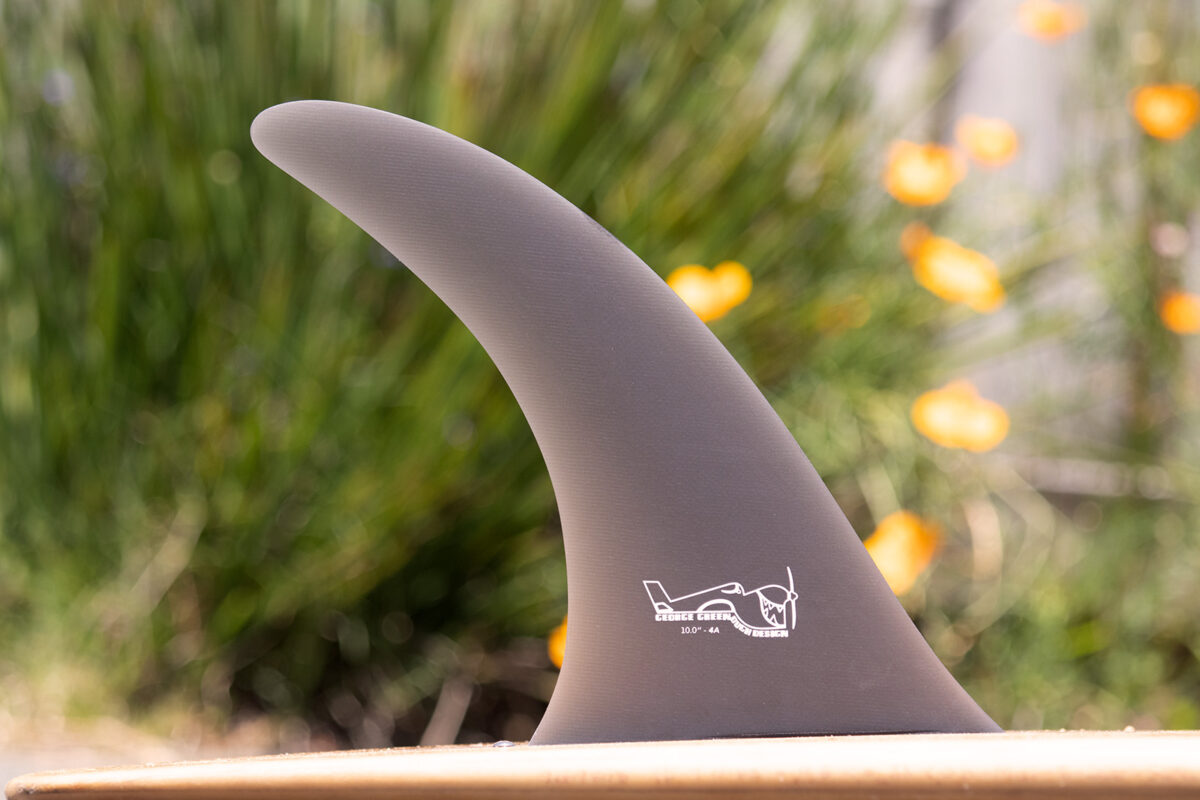
by George Greenough
The Twin Fin
The modern-day twin fin design was brought to mainstream popularity by Australian surfer Mark Richards. Mark Richards set the surfing world alight with the twin fin and subsequently won four world titles riding this electrifying fin setup. Where the single fin lacked speed and agility, the twin fin was quick and maneuverable. The twin fin has two small fins placed at the back of the surfboard close to the rail and works particularly well in small, powerless surf.

The Thruster
Although most people credit the thruster design to Simon Anderson, Simon is quick to admit that he was not the thruster’s inventor. Simon attributes its invention to Frank Williams. He did, however, popularise it with his win at massive Bells Beach in 1981. It was after Simon’s win at Bells Beach that the thruster design snowballed into what it is today. The thruster remains by far and wide the most common fin setup. As a big man with a heavy back foot, Simon struggled on the twin fin and preferred riding single fins over twins. The thruster was Simon’s answer to the quickness of the twin fin while still maintaining the stability of the single fin.
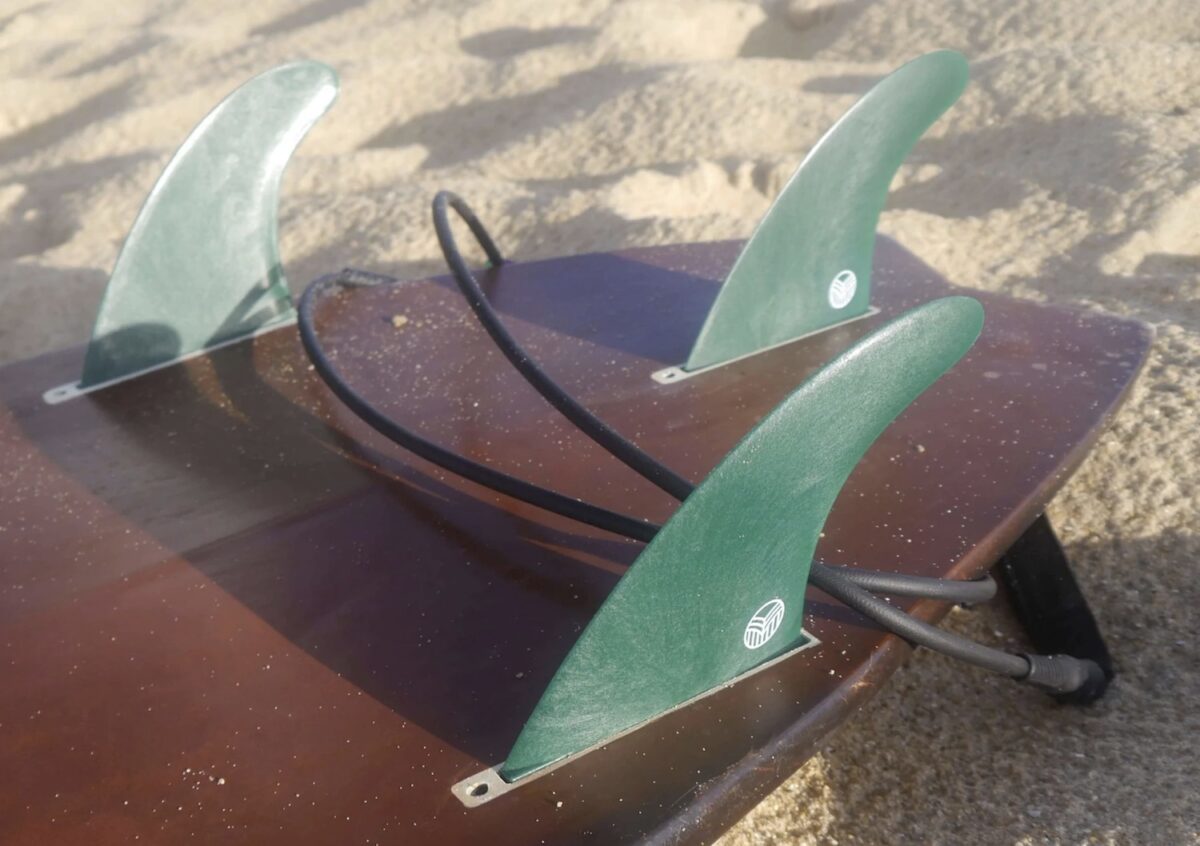
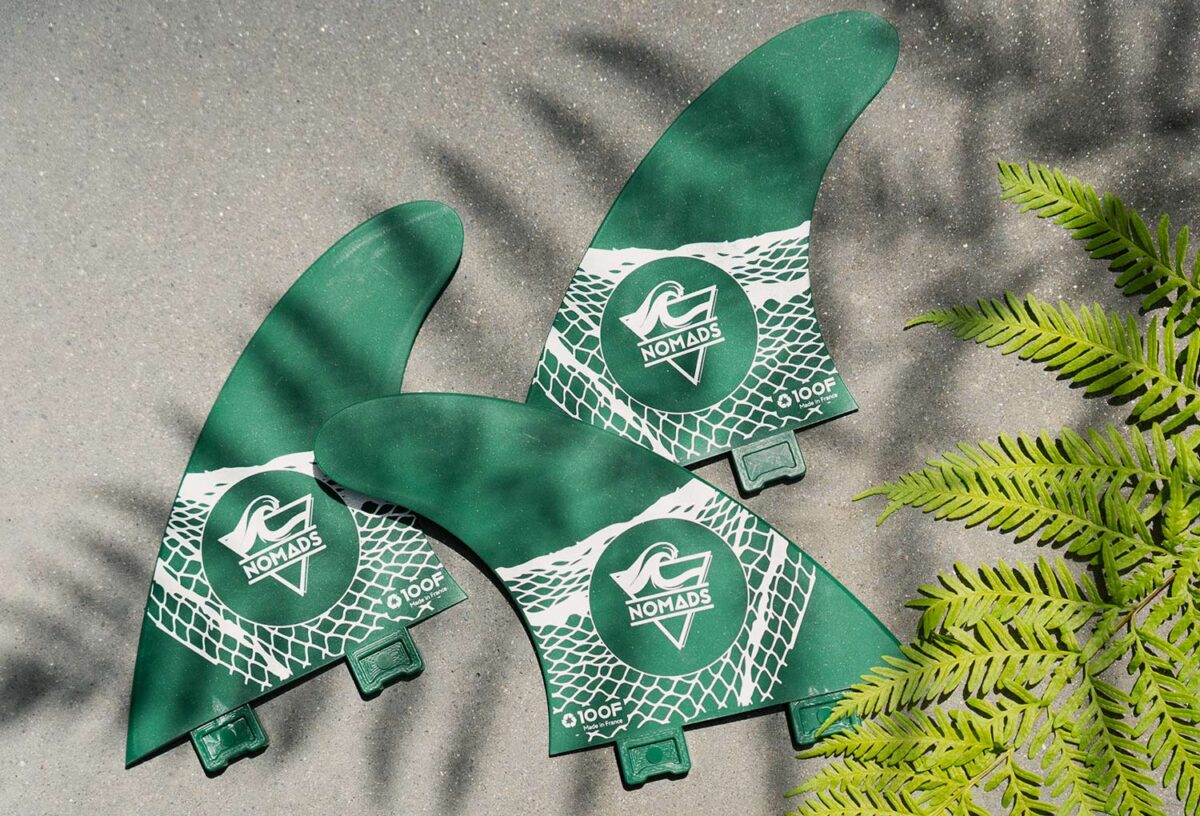
The Quad Fin
As its name so aptly states, the quad fin setup consists of four fins. Two larger fins close to the rail, and two smaller fins placed further in from the rail. Where the center fin of the thruster acts as a brake and the absence of a center fin on the twin fin equals less stability and control, the quad fin aims to find a balance between the speed of a twin and the control of the thruster. Fun fact: Brazilian surfer, Filipe Toledo won the 2022 Surfing World Championship riding a quad fin setup at the Rip Curl WSL Finals at Trestles. His surfing was nothing short of electrifying; fast, precise, and powerful. Are we about to see a resurrection in the popularity of the quad-fin setup?
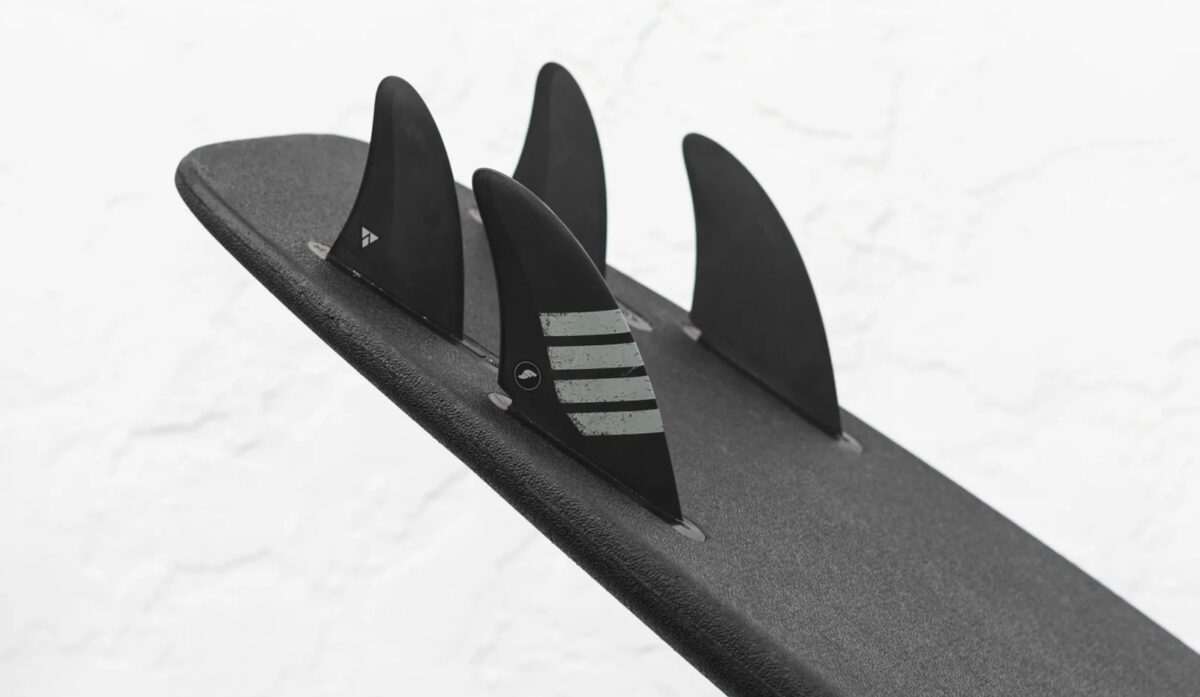
The Two Plus One
The two plus one fin setup is made up of a large center fin complimented by small to medium-sized stabilizers on each side close to the rail – much like a thruster. The stabilizers, or ‘sidebites’ as they are sometimes referred to, contribute lift, drive, and stability to the surfboard. The two plus one is most commonly found on mid-length style surfboards where a surfer wants the feel of a single fin complimented by the modern-day amenities provided by a thruster.
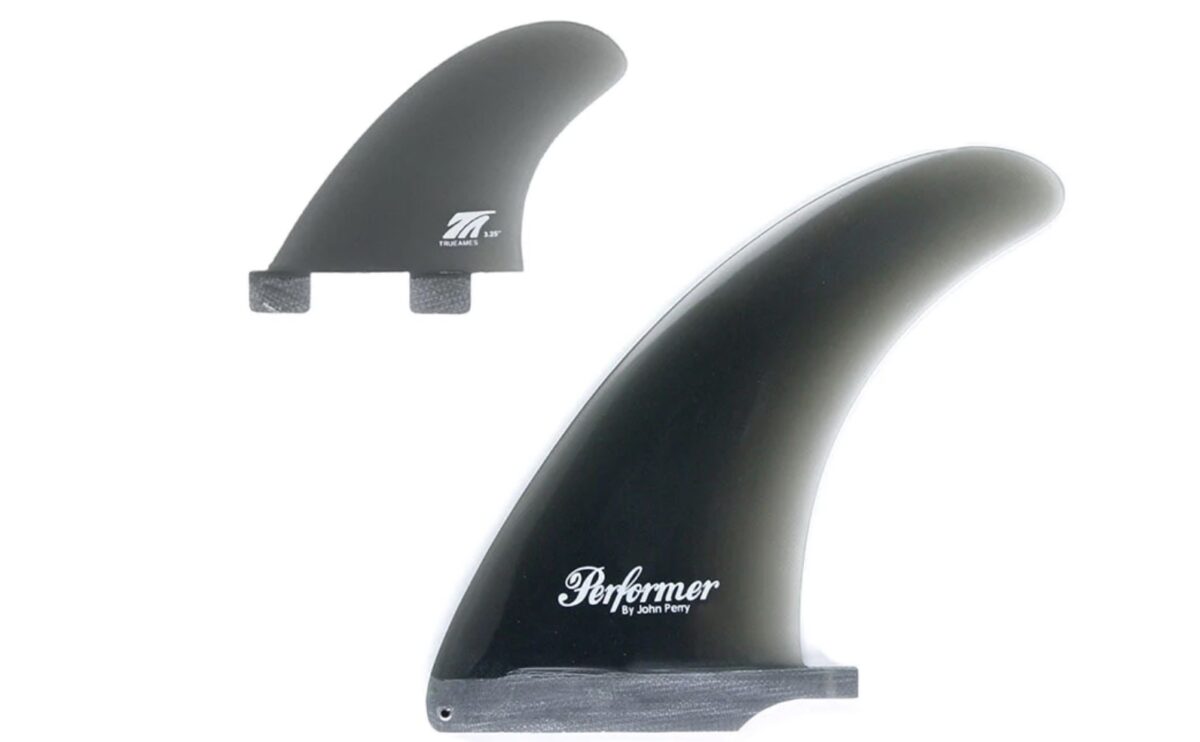
by John Perry
The Bonzer
Probably the least popular of the aforementioned fin setups, the Bonzer, invented by the Campbell brothers in California circa 1970, consists of a three or five fin setup. Invented with more powerful waves in mind, the Bonzer usually comes with a seven inch centre fin with two or four delta-shaped fins (otherwise known as runners) situated near the rails in a similar position to the modern-day thruster.
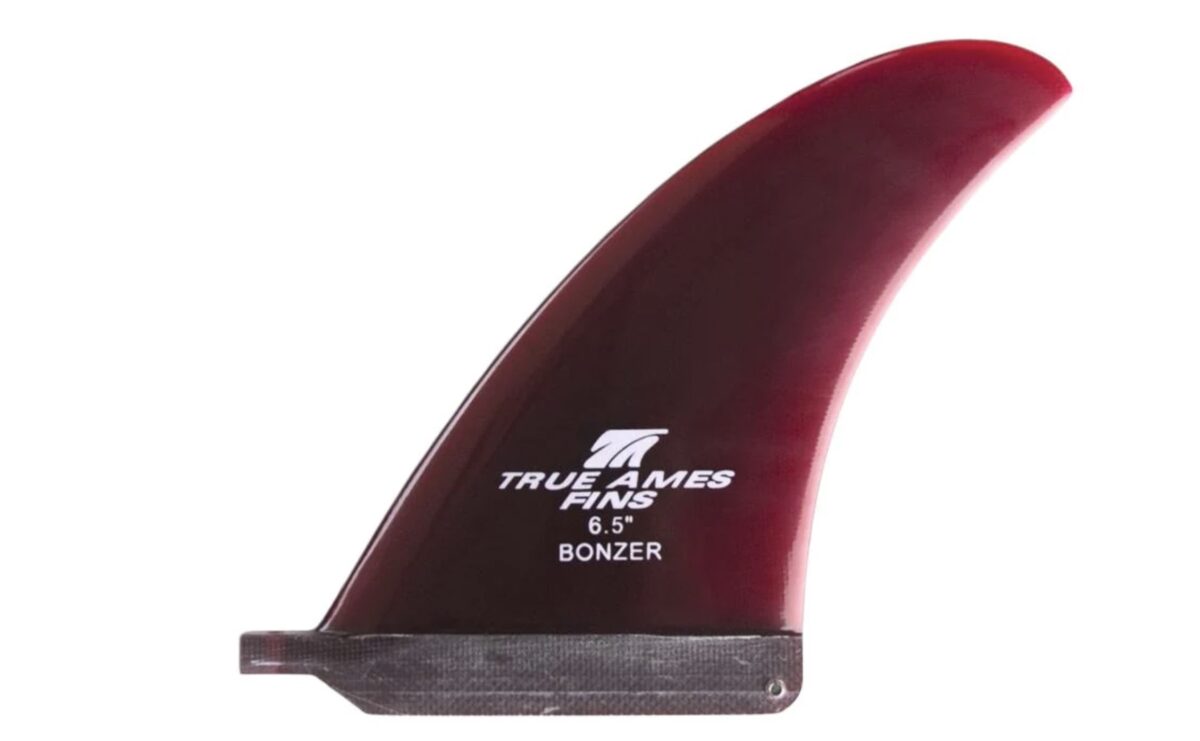
Dimensions and Performance
There are six main aspects one must consider when purchasing or deciding on what fins to ride in your surfboard. The first and most obvious decision would be: what fin setup suits your surf craft? The style of fin you would ride in your single fin longboard would be vastly different to the fins you’d use in your shortboard. Once you understand what style setup suits your craft you can get to the nitty gritty of how each aspect of a surfboard fin influences the performance of the board.
Here are the six most important characteristics of surfboard fins and how those characters impact performance.
Fin Size
Bigger fin equals more control and hold. A smaller fin results in less control and hold. The size of the fins you choose to ride would normally be determined by your weight. The heavier the individual, the bigger the fin required.
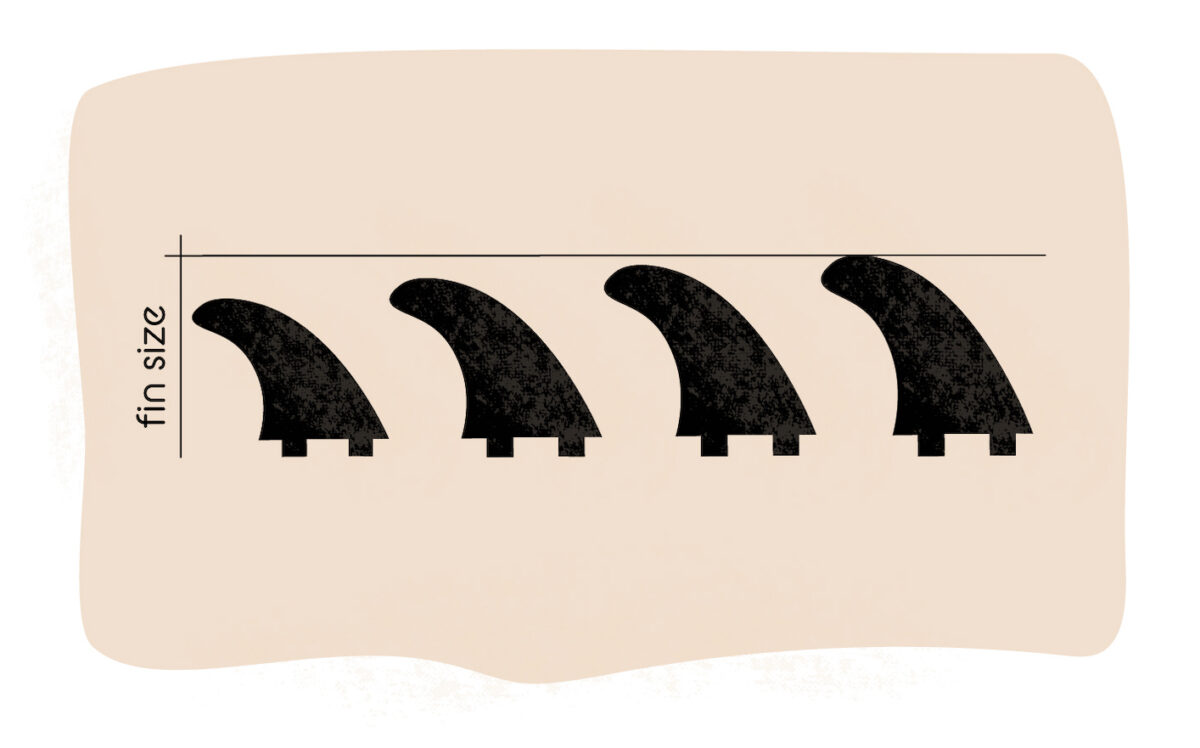
Fin Base
Fin base is the bottom part of the fin that touches the surfboard. More base results in more drive and less maneuverability. Less base will give a surfboard less drive but will be easier to turn.
Fin Depth
Fin depth is the height of the fin and is measured from the base to the top of the fin. The deeper your fin sits in the water the more control and stability your surfboard will have.
Fin Rake
Fin rake is how far back the tip of the fin is in relation to the fin base otherwise known as the ‘tilt of the fin’. Fins with less tilt will allow for easier pivoting i.e. turning the board with a tighter arc. More fin tilt will give your surfing less pivot and more drawn out carves. A surfboard fin with more tilt is perfect for bigger, clean surf where the waves have a generous open face.
Fin Foil
The fin foil relates to the side of the fin shape i.e. how much it sticks out from the center. Your fin foil will affect how water moves past the fin and aids in creating lift under the board.
Fin Cant
Besides your center fin, the fins in your surfboard are usually angled slightly outwards from the surfboard – towards the rail. Fin Cant refers to the angle of the fins in relation to the surfboard. More fin cant will give a surfer increased responsiveness and maneuverability – less fin cant equals faster with a compromise in agility.
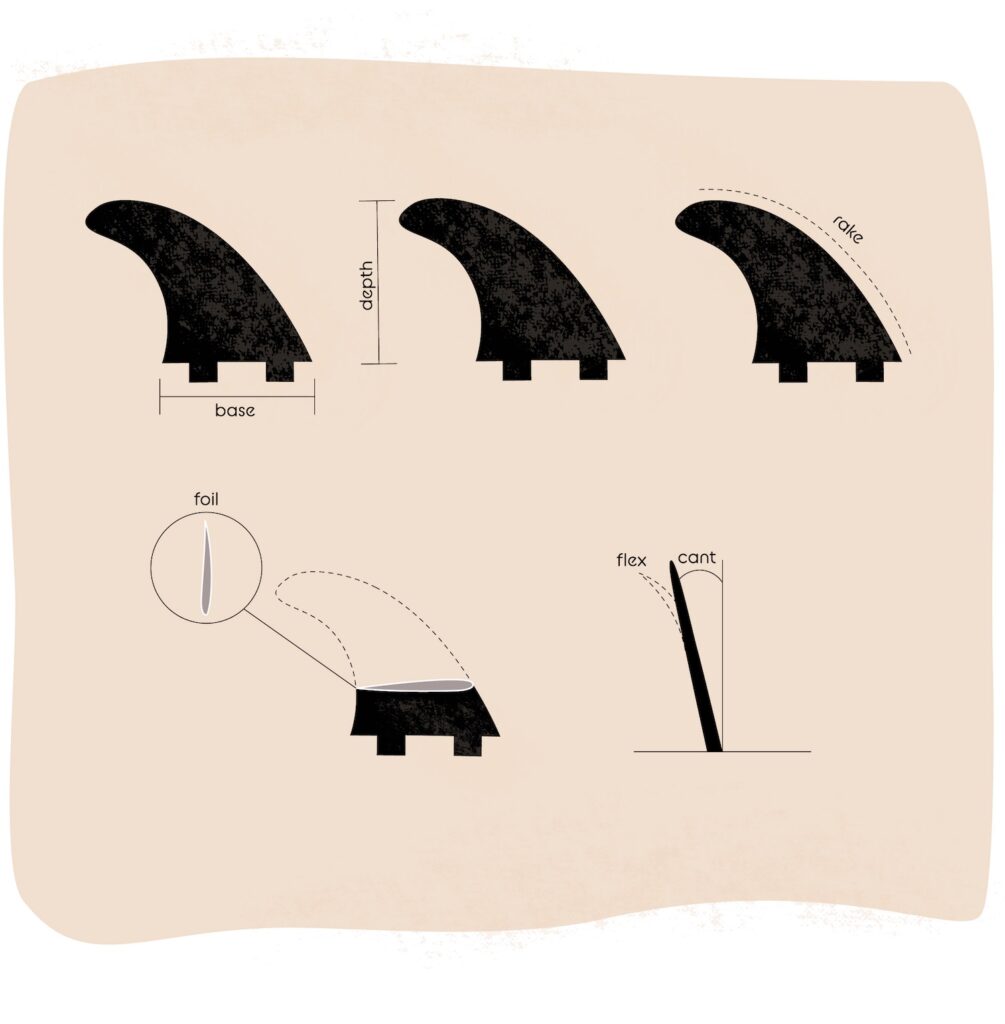
Summary
The first and most important item to consider with fins is what fin setup suits your craft. Once you’ve got that down, it all comes down to what flavor you desire. Less hold with more speed? Do you want a board that turns tightly in the pocket or a fin with lots of rake for drawn-out bottom turns and elongated roundhouse cutbacks?
Now it’s time to choose your flavor!

